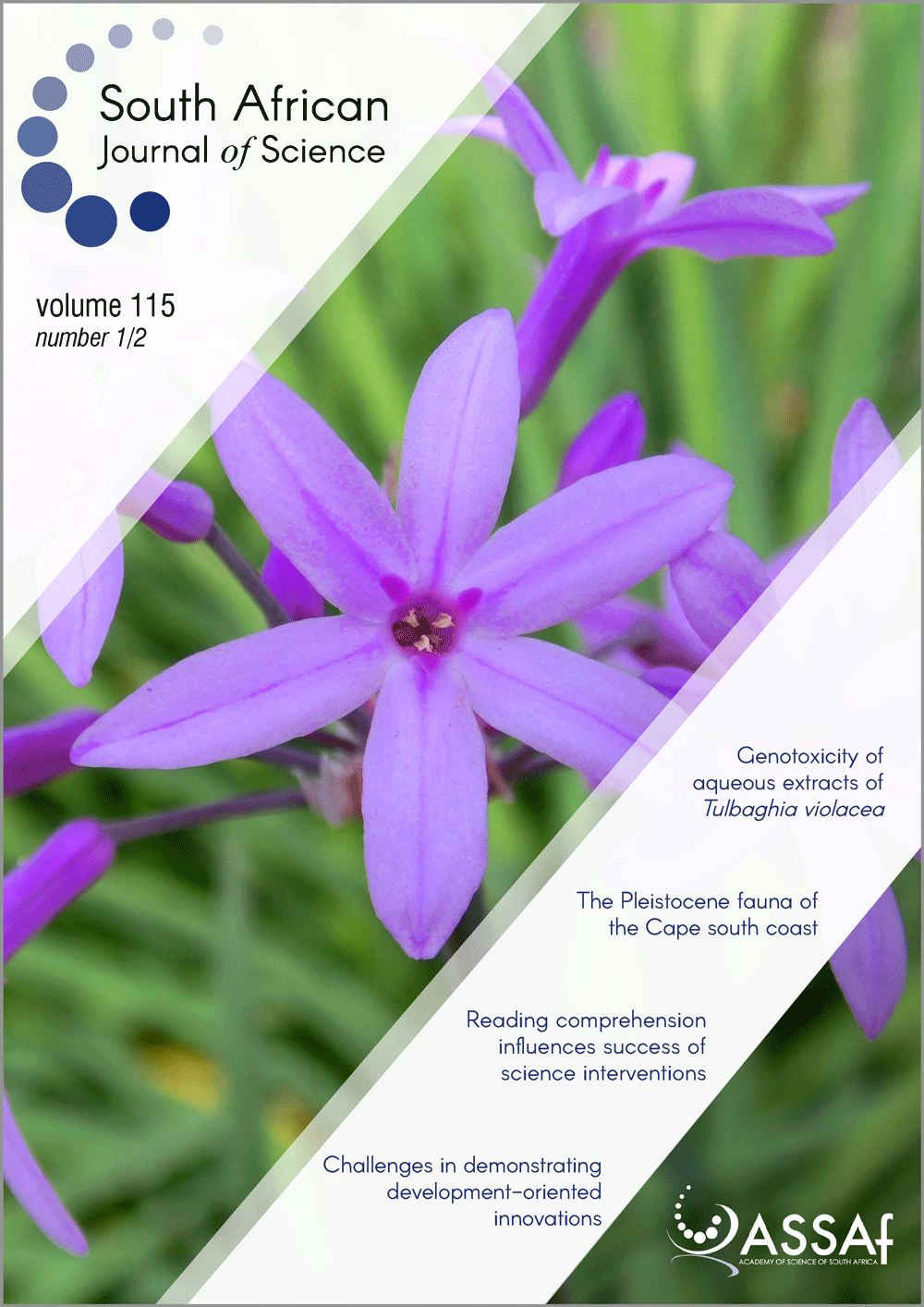Genotoxicity of aqueous extracts of Tulbaghia violacea as determined through an Allium cepa assay
DOI:
https://doi.org/10.17159/sajs.2019/4391Keywords:
traditional medicines, chromosome aberrations, ethidium bromide, genotoxic, mitotic indexAbstract
Tulbaghia violacea (wild garlic) is commonly used in traditional medicine for the treatment of various ailments including fungal infections, gastrointestinal ailments, asthma, fever, colds and pulmonary tuberculosis. We assessed the potential genotoxic effects of water extracts from the leaves, stems and roots of T. violacea using the Allium cepa assay. Extracts at concentrations of 100, 250, 500 and 1000 μg/mL were tested on root meristems of A. cepa. Ethidium bromide was used as a positive control whereas distilled water acted as a negative control. The results reveal that as the concentrations of the water extracts of T. violacea increased, the mitotic indices decreased. Similarly, the percentage of chromosomal aberrations was dependent on the concentration as well as on which part of the plant was used. The six most common chromosome aberrations included laggard chromosomes, chromosome bridges, c-mitosis, sticky chromosomes, formation of binuclei and formation of trinuclei. The presence of micronucleated cells at interphase also increased as the concentration of the water extracts increased. The results confirm that water extracts of T. violacea exert significant genotoxic effects at higher concentrations, with the stem extracts being more toxic than the leaf and root extracts at similar concentrations.
Significance:
- Water extracts of T. violacea – a plant commonly used in traditional medicine – were found to have significant genotoxic effects at higher concentrations.
Published
Issue
Section
License

All articles are published under a Creative Commons Attribution 4.0 International Licence
Copyright is retained by the authors. Readers are welcome to reproduce, share and adapt the content without permission provided the source is attributed.
Disclaimer: The publisher and editors accept no responsibility for statements made by the authors
How to Cite
- Abstract 1097
- PDF 1122
- EPUB 216
- XML 422













.png)